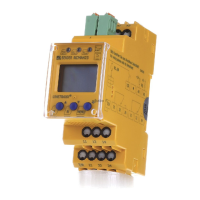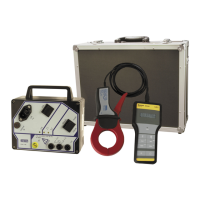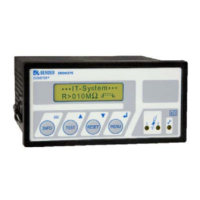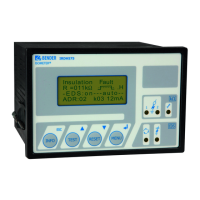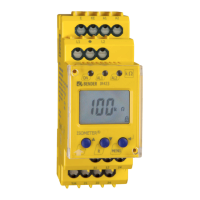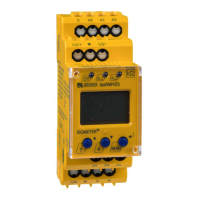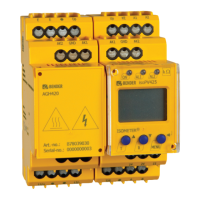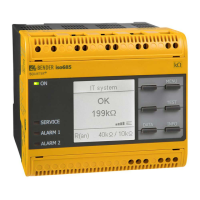7
NGRM700_D00292_02_Q_XXEN/06.2018
Initial commissioning
The commissioning wizard (menu 8) queries the following parameters; additional settings: menu 6.
Language (8.2) Select
Date (8.3) Set
Time (8.4) Set
Usys L-L (8.5) System voltage
Frequency (8.6) 50 or 60 Hz
INGR nom (8.7)
RNGR nom (8.8)
CT primary (8.9)
CT secondary (8.10)
CT connection (8.11) 50 mA or 5 A
Field calibration (8.12)Start or do not start
1. Setting the response values (menu 6.5)
Trip threshold value for voltage (
U
NGR
)
Trip threshold value for current (
I
NGR
)
Trip threshold values for resistance (
R
NGR
)
2. System settings of the relays (menu 6.6)
The factory setting for the relays is fail-safe. In the case of self test, the relays change state.
3. Field calibration (menu 6.7)
After the parameters have been entered, a field calibration can be carried out to set R
NGR
= R
NGR nom
.
4. Trip signal RMS, fundamental frequency, harmonics
Which measured value causes tripping can be selected via the "Trip signal" parameter (menu 6.5.11). A
trip signal can be:
RMS
: The r.m.s. value of
I
or
U
over the entire frequency range (up to approx. 3.8 kHz).
Fundamental frequency
: Only the r.m.s. component of the fundamental frequency (50 or 60 Hz).
Harmonics:
The filtered r.m.s. value on the set harmonics where
H0 = DC; H1 = fundamental frequency; H2 = 2 x fundamental frequency; …H32 = 32 x funda-
mental frequency
Low trip threshold values: may lead to false tripping.
High trip threshold values: the device may not trip at all
Fail-safe: The relay is energised during normal operation and is deactivated in the event
of a fault.
Non-fail-safe: The relay is de-energised in normal operation and is activated in the event
of a fault.
In the "Harmonics" measured value display (menu 2) all spectral lines are always
displayed. This is independent of the trip signal setting.
On the standard display, the trip signal is indicated as resistance (in Ω or %) or as
current (in A or %). The setting is entered in "Display" (menu 5).

